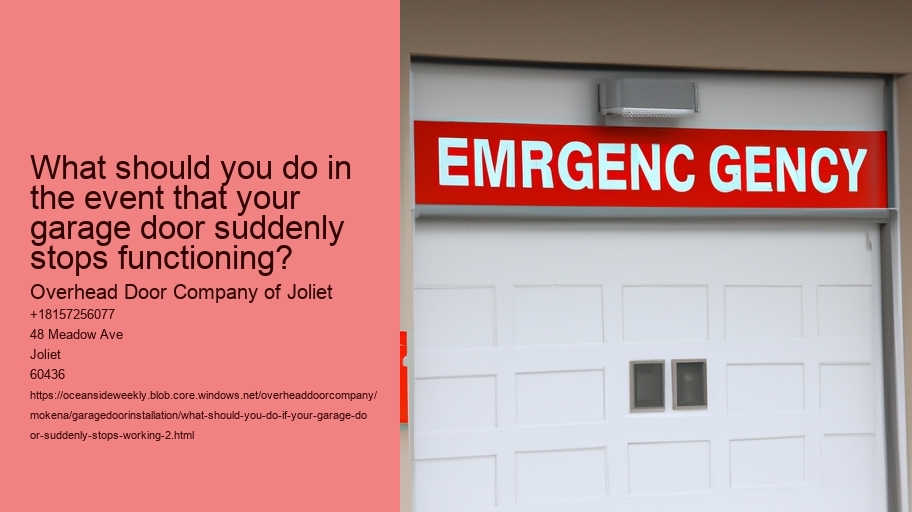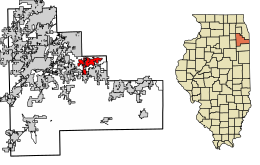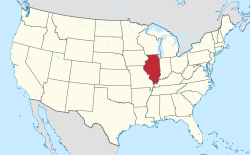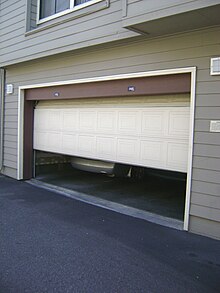What Type of Garage Door Opener and Door Do You Have? What should you do when the garage door stops working? .
It is vital to identify the type of garage door and opener that you have before you start troubleshooting.
Garage doors are generally classified into several categories based on their style and operation.The most commonly used varieties are roll-up, sectional, and tilt-up doors.Sectional doors are made of panels joined by hinges, which allow the door to open and close by bending as it opens and closes on a vertical track.Roll-up doors, often found in commercial areas made of slats that roll up into a coil.
Tilt-up doors, on the other hand are a single piece of furniture that tilts out and up as it opens.Also important is knowing the type of garage door opener.The three most common types are belt-drive, chain-drive and screw-drive openers.Chain-drive openers, which rely on an iron chain to raise and lower the door, are durable and affordable but they are noisy.Belt-drive openers operate similarly however they use a belt made of rubber, making them quieter and a great choice for attached garages.Screw-drive openers open and close the door with a threaded steel rod providing a compromise between costs and noise.
The next step is checking your garage door opener and determine the type. Check the breaker and plug to confirm that the opener is operating. Examine the manual release cable to make sure it's not been pulled. This will result in the door being disconnected from the opener. Inspect the rollers and tracks of the door to determine if there are any damage or obstructions and remove any debris.
Lubricate moving components if needed because a lack of lubrication can result in jamming, sticking or even squeezing.Resetting the opener will fix any electronic malfunctions. Check the manual for the model you are using to know the specific steps. Certain openers can be reset by pressing a button while others require that the unit not be plugged in and then plugged back in.
Spring tension is high and it can be hazardous to repair them if you don't have the right tools.
What should you do if your garage door suddenly stops working? - experience
- manufacturing
- experience
- warranty
In conclusion, if the garage door stops functioning it means that the
Examine for debris or obstructions.
If your garage door suddenly ceases working, it's extremely frustrating and confusing, especially if it's a part of your daily routine.
One of the basic and most efficient steps you can do when confronted with this situation is to check for obstructions or debris.This simple, yet powerful action can be a key in identifying the issue and then restoring function to your garage door.Garage doors run by a set that includes rollers, tracks and other moving parts that have to be free of obstacles to work smoothly.Over time dirt, leaves, small rocks, or other debris may accumulate along the tracks, or get caught in the rollers.Even small obstacles could cause the door to stop closing or opening properly.Therefore, a thorough inspection of these parts is the first step.
Begin by examining the tracks both on the left and right sides of the door. Check for obvious obstructions, or debris build-up. If you see something unusual, like an acorn, or a rock stuck within the track. Take it out with care.
The issue may not be obvious at all times. To determine whether the issue is there, try running your hand along the track. Also, make sure that the tracks are aligned. This is because misalignment could also cause the door jam.Then, check the rollers and hinges. The parts are supposed to be moving without resistance. If they're stuck or sticky, this could be due to corrosion or dirt. Lubricating and cleaning the parts will typically solve the issue.
It's also crucial to examine the area surrounding the door itself.Sometimes things that are kept in the garage could accidentally slide or shift, obstructing the pathway of the door.Ensure that the area is clear and that nothing is obstructing the door's movement.
If, after clearing any obvious obstructions, your door does not work check the sensors.
The sensors on modern garage doors may malfunction if they are dirty or not aligned properly.If you keep your path clear and clearing out obstructions, you'll avoid having to contact a professional fix a problem that is typically straightforward.
Make sure you check the wall switch and remote control
If your garage door suddenly stops working, it can be an unintentional inconvenience that interrupts your everyday routine.In such instances, it's natural to feel that you must fix the problem quickly.One of the first and most efficient steps you could take is to look at the remote control and wall switch.
By checking these components, you save time and prevent costly errors.First, consider the remote control.This handheld device is your primary tool for operating the garage door without direct physical interaction.Over time, remote controls can experience issues such as drained batteries, signal interference, or even internal damage.Start by replacing the batteries with new ones.It might seem simple, but dead batteries are a common reason for a garage door not responding.If the problem persists after replacing the batteries, try reprogramming the remote according to the manufacturer's instructions.Additionally, ensure that the remote is within the recommended range and that there are no obstructions blocking the signal.
The wall switch is a critical component of the garage door system.
If you're comfortable, open the switch panel to check whether the wires are damaged or disconnected.In certain instances, the remote control and wall switch might seem to be functioning but the door still remains unresponsive.This may indicate an issue with the garage door opener itself or other parts like sensors or door tracks.However it is best to start by utilizing the wall switch and remote control is a logical first step.
It helps you eliminate these common problems before proceeding to more intricate troubleshooting techniques.To conclude, checking the remote control and wall switch in the event that your garage door suddenly stops working is a practical and straightforward approach.By inspecting these parts first, you can quickly determine if the issue lies within these easily accessible parts or if additional examination is needed.This initial examination does not only cut down on time, but also gives security knowing that you've taken the appropriate steps to identify the problem correctly.
Manually Test the Door Balance
If your garage door suddenly stops working, it can be both frustrating as well as inconvenient.The garage door is an integral part of your house, offering security, shielding from the elements, as well as easy access to your vehicle as well as storage space.
Testing the balance manually on the garage door can be the most important thing to do when your door isn't working. This simple but powerful method can help you identify any possible issues and avoid any further damage.The balance of a garage's door is essential to its optimal functioning.A well-balanced door ensures that the door opener doesn't have to work harder than is necessary, which reduces the likelihood of wear and wear on the motor and other parts.An unbalanced door, contrary to what you might think could cause more severe issues over time including misalignment, broken springs, or complete system failure.Therefore, testing the door balance is an important method of diagnosis that can help determine if the problem is with your door or opener mechanism.
Start by disengaging the garage door opener.
What should you do if your garage door suddenly stops working? - warranty
- vehicle
- moraine
- boat
If you notice that your door is not properly balanced, it is important to address the issue promptly.Door balance issues are usually related to the tension of springs. They can be dangerous to adjust by yourself because of the tension they're under.It is recommended that you get help from a professional to adjust spring tension and ensure that the door is balanced correctly.Doing this does not just solve the immediate problem but also will increase the longevity and stability of the garage door system.
Checking the balance manually of the garage door is a crucial first step you can take if it suddenly stops working.
When you take action quickly and recognizing the importance of each to address them quickly, you can ensure your garage door will operate seamlessly and safely in future.Take a look at the tracks and rollers.
This easy check can save you money and time if your garage door is not functioning.
The tracks and the rollers of the garage's operating system are crucial. The tracks are metal rails that help guide the door as it opens. The rollers run along the tracks.
As time passes, these components could become dirty, misaligned, or worn out, resulting into operational problems.Begin by inspecting the tracks for any obstructions.Dust, grime, and even tiny pieces of debris can build up within the tracks, which causes the rollers to struggle while they move along the path.Cleaning the tracks with a damp cloth is often enough to resolve these issues.Make sure to dry them thoroughly afterward in order to avoid rust.
The next step is to verify the alignment of the track. Tracks must be straight and parallel. If they look bent or out of alignment, the door might jam. It is possible to hit the section that is not aligned to its proper position using an instrument made of rubber. However, if there are any significant damages, it's recommended to consult an expert who can realign the tracks to their proper alignment.
It is also important.Over time, the rollers could wear down or be damaged particularly if they're constructed out of plastic.
Examine for signs of wear and tear for example, cracks or chips.If the rollers appear worn, think about replacing them with new ones.Metal rollers that have ball bearings tend to offer greater durability and smoother operation.The use of silicone-based lubricants will decrease friction and wear. Make sure you lubricate the hinges as well as the springs to ensure your garage door is functioning properly.
In the end, looking at the rollers and tracks is a practical first step when the garage door suddenly isn't working.It's simple procedure that will often reveal and fix common issues.By checking that the components are clean, aligned, and well-lubricated, you could usually restore your garage door fully functional without having to pay for costly repairs.
It is important to check and maintain regularly these components will also help to prevent future malfunctions, prolonging the life of your garage door's mechanism.Look for Visible Damage or Wear
It can be frustrating and a hassle when your garage door stops operating abruptly, especially if you're heading home, or trying to lock your home for the night.
Garage doors are complex systems that comprise rollers, springs cables, tracks, and various other parts. Over time, the components of this system could become worn-out due to daily use and the exposure.
When you conduct a thorough inspection, you can identify any obvious signs of damage that could be creating problems for the door.Start your inspection with the springs. They are responsible for raising and lowering the door. Check for signs of wear and rust. A worn spring could make the door inoperable, therefore it's crucial to repair this issue immediately. After that, examine the cables for fraying or broken strands.
Another thing to look at is the door itself.Look for any visible bents, dents, or warpings that could impact its stability and alignment.Pay careful attention to the weather stripping at the lower part of the door, as a damaged strip can hinder the door from sealing correctly.
Also, make sure that the door's sensors are clean and aligned, as dirt or misalignment can affect their functionality and make the door stop functioning.While a visual inspection can offer valuable insight but it is crucial to keep in mind that certain issues might not immediately apparent.If you are unable to find any obvious evidence of wear or damage, it might be necessary to talk with a professional to determine and solve the problem.However it is possible to conduct a preliminary inspection, you can often identify and address minor issues before they turn into expensive and expensive repairs.
This strategy will not only help you identify the problem more quickly, but it will also enable you to take steps to repair the proper functioning of your garage door.
You can extend the life of your garage door by taking a proactive approach.Examine the Springs and Cables
It can be frustrating when your garage door stops functioning. You must check the springs as well as the cables. These are crucial for the functioning of your garage, and are the primary reason for a malfunctioning garage door.
The springs play an essential function in the operation and smoothness of your garage by supporting the weight. There are two main types of springs: torsion and extension. The torsion springs sit above the garage and then twist to store energy. Extension springs are on the other hand, are placed either side of door and can stretch to give the necessary force.
These springs are prone to become worn-out over time break or loose tension causing problems in operation.The cables could be damaged by wear and tear. They can fray or snap under the pressure.
In assessing the springs and cables, start by looking at them.Look for indications of wear, rust, or fraying.If you spot a broken spring or cable, it's important to avoid opening the door until the issue has been resolved, as forcing it could cause more injury or result in an accident.If springs appear to be intact however, the door is not functioning, it may be due to them losing tension and need adjustment.
Safety is paramount while dealing with garage door components.
Springs and cables are under high tension and can cause serious injury in the event that they are mishandled.If you're unfamiliar with garage door repairs, you should to seek out a professional technician.They are equipped with the right tools and expertise to safely repair or replace these parts to ensure your garage door operates properly and safely. In conclusion, when your garage door suddenly stops working, assessing the springs and cables is a key step in diagnosing the problem.Understanding their role and potential issues can help you determine whether a simple adjustment is needed or if professional intervention is required.Taking prompt action not only restores functionality but also ensures the safety and longevity of your garage door system.
What should you do if your garage door suddenly stops working? - experience
- push-button
- extension cord
- printed circuit board
Think about calling a professional technician
The garage door could suddenly stop functioning and cause you to waste time. It could cause your home to be at risk.
While it might be tempting to grab the tools and attempt doing it yourself The most sensible approach is to think about calling an experienced technician.This decision not only ensures your safety, but also provides a more effective and lasting solution to the issue.Garage doors are complex systems composed of various components such as springs, cables, tracks, and electronic parts.Each of these elements plays a crucial role in the door's operation, and a malfunction in any part can cause the entire system to fail.Without proper knowledge and experience, attempting to fix these issues can be dangerous.For instance, garage door springs are under high tension and can cause severe injury if handled improperly.Professional technicians are trained to deal with these risks safely, using the right tools and techniques to handle repairs.
Moreover, a professional technician brings expertise and experience that an average person does not possess.
They can quickly diagnose the issue and identify whether it's a minor problem, like a misaligned track, or something more serious, like a broken spring.This expertise not only saves you time but also prevents the potential for further damage that can occur with incorrect handling.Professionals also have access to high-quality parts and can ensure that replacements match the specifications of your existing garage door system, leading to better functionality and longevity.A professional technician can also be more cost effective in the long haul. While an DIY option may appear to be less costly initially but, it could end up resulting in extensive and expensive repairs later.
A lot of technicians offer warranties on their work, which gives you peace of knowing that if something goes wrong, you are covered.Calling a professional will help you save time and money. Trying to understand the mechanism behind garage doors, buying the appropriate tools and complete repairs could take many hours or even days. A technician will be able to fix the problem quickly and allow you to get back to your regular routine.
While the urge to fix your garage door on your own may be strong, contacting an expert technician is the most secure best, most efficient, and ultimately, the most practical option.Their skills, experience as well as access to top-quality parts, and their ability to complete quick and precise repair work will make sure that your garage door is back and running smoothly again, protecting both your property and your valuables.


















